Succeeded to simulate 'natural clothes' with deep reinforcement learning

"Dress change action of animation character" became a complicated movement from the relationship between character and clothes, making it very difficult to create using a computer. Meanwhile, Alexander Clegg of the Georgia Institute of Technology who studies character animation and robot engineering automatically uses the model-free Deep Reinforcement Learning (Deep Reinforcement Learning / deepRL), and automatically selects the appropriate "change of humans" Develop algorithms to discover (PDF files) . We succeeded for the first time to integrate the simulation of "cloth" into the deepRL framework and learn control strategies for clothes.
Learning to Dress: Synthesizing Human Dressing Motion via Deep Reinforcement Learning
https://www.cc.gatech.edu/~aclegg3/projects/LearningToDress.html
The algorithm developed by Mr. Clegg simulates the action of wearing clothes using virtual human beings (humanoids), and how to properly perform "changing clothes" is seen from the following movie I can.
Learning To Dress: Synthesizing Human Dressing Motion via Deep Reinforcement Learning - YouTube
Humanoid who changes clothes using algorithms developed by Clegg et al. Looks like this. First pass through the T - shirt ... ...
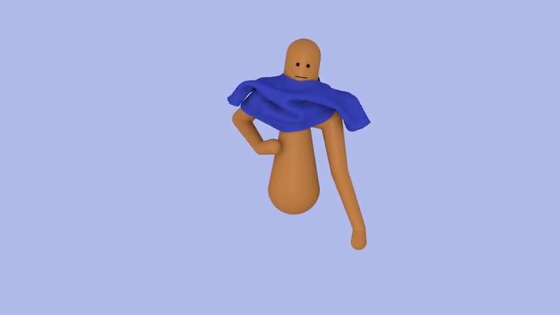
Pass the left hand through the sleeve.
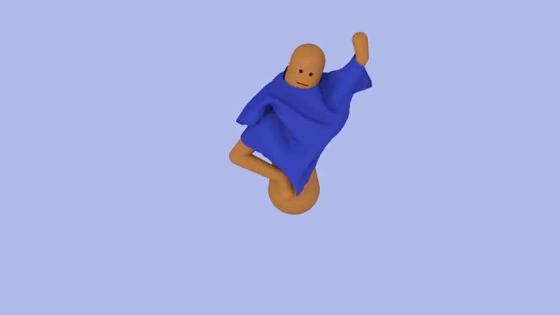
And finished through the right hand. It looks as if you are changing clothes so easily.
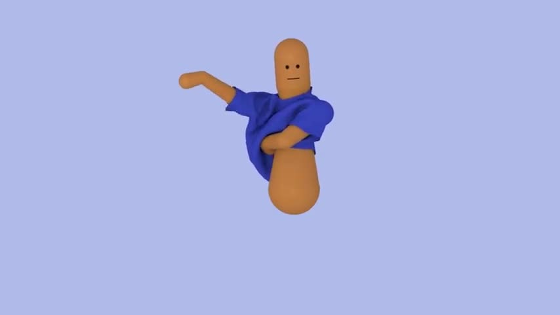
In the case of a jacket it is like this.
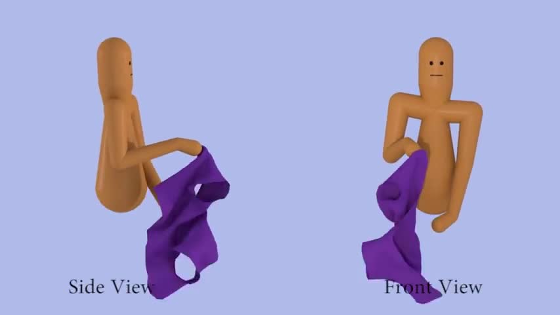
First left hand.
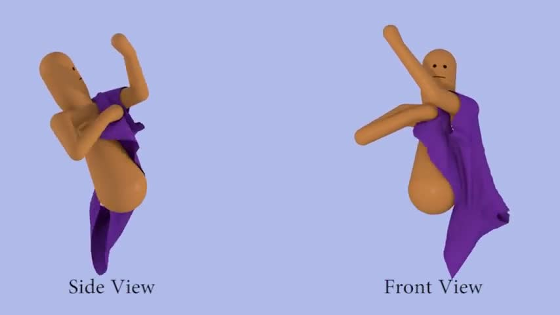
Turn the jacket back ... ...
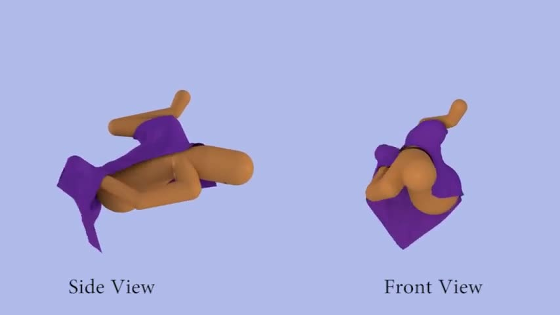
I will pass the right hand.
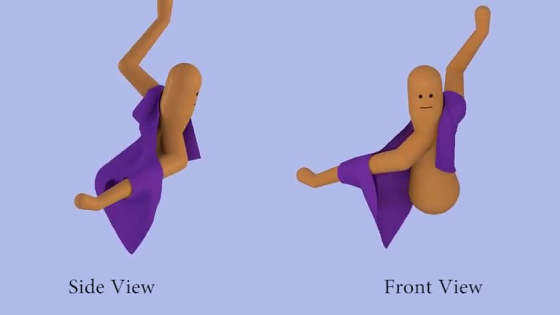
That's it.

... .... Although it seems to be changing clothes without any difficulty, in fact, when you wear clothes on humanoids, confusion often occurs when clothes are different.

It is nature to pull on wearing clothes.
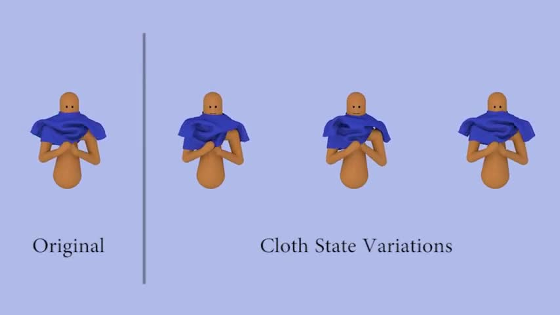
Passing through the left hand ......
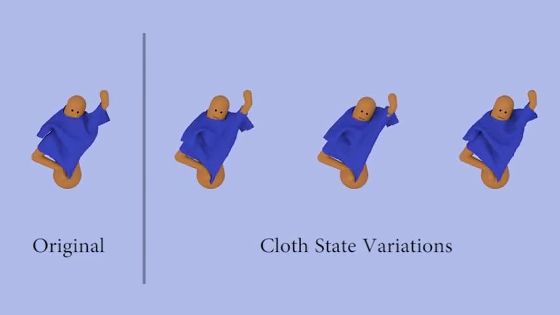
The sleeve of the left hand which was supposed to have passed was newly born ... ....! To the situation.
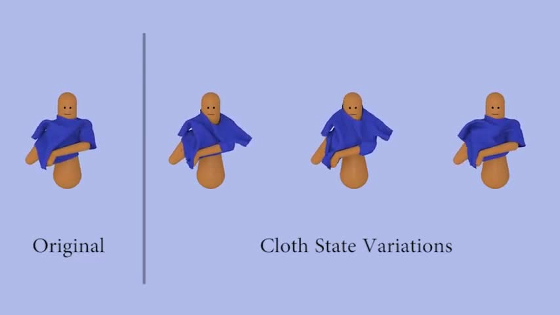
I got confused.
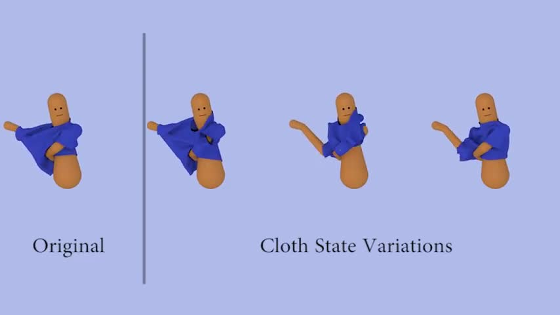
"Wearing!" Is a humanoid of the face of the doya, but the right three bodies with variables in clothes end in a state far from natural clothing.
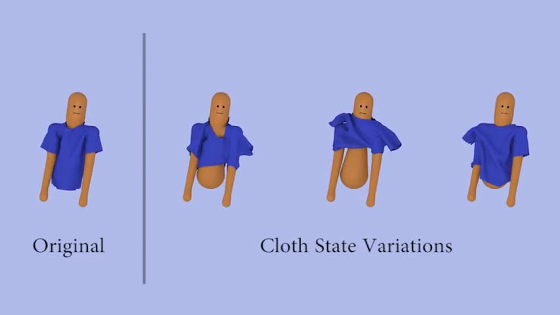
Next, the version adopting the algorithm developed by Clegg et al.

Although there are differences in the movement of humanoids and clothes ... ...
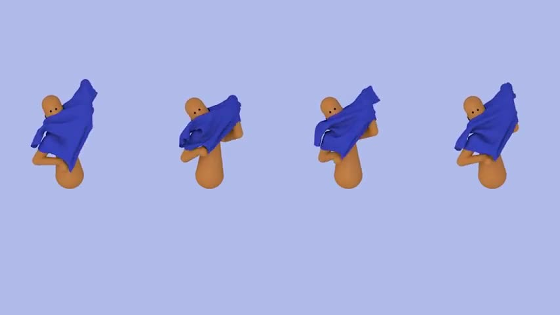
I can do natural clothes without increasing sleeves. It seems that it is the key to have each action such as "grab the edge of clothes" and "pull sleeve" as a separate task.
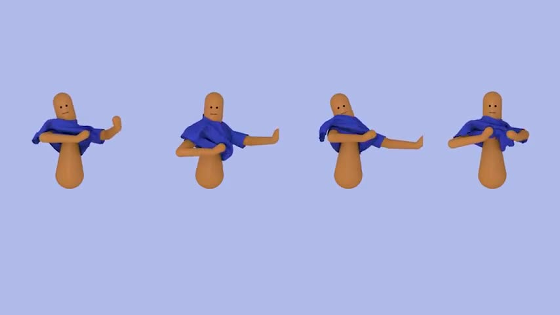
Looking for the sleeve of the right hand ......
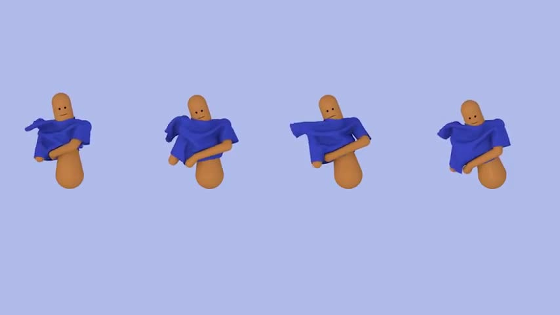
Each clothes done.
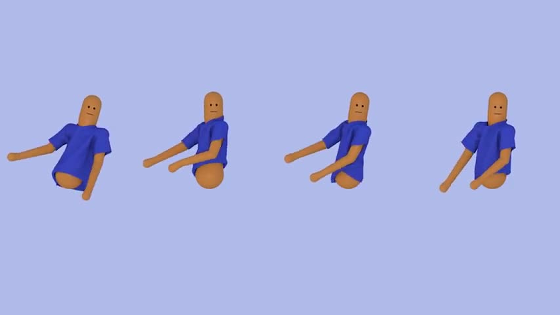
Also, Mr. Clegg et al.'S algorithm incorporates elements of additional force action " perturbation ". The part indicated by the red arrow is a perturbation.

Besides this, haptic measures, geodesic measures, task strategies, etc. are used, and if one of them is missing, you can not change clothes well like three right humanoids.

In addition, it also helps clothes by incorporating linear tracking.

Mr. Clegg has developed a "strategy prioritization algorithm" that matches the distribution of the output state of one task with the distribution of the input of the next task, and by using such a control strategy, He said that he succeeded in naturally wearing various clothes such as T - shirts and jackets.
Related Posts:







